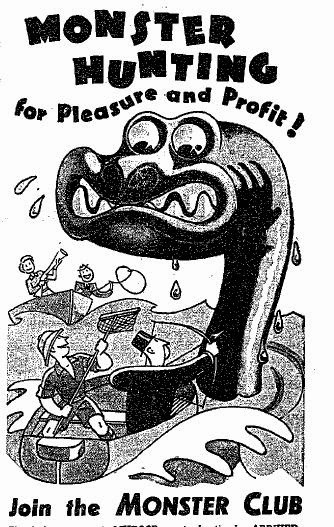So this monster starts popping up in Loch Ness and the articles and letter begin to fly off the typewriters (remember them?). By the time the media speculation began to subside in late 1934, just about everything that was big and could swim had made it onto the Nessie identity parade.
The turtle was no exception and got into the public Nessie consciousness as early as 8th December 1933. This clipping from the Daily Record is reproduced for your edification. Note the editor throws in a few antediluvians while he is at it (namely, the elasmosaurus, clidastes and mosasaurus).
A TURTLE IN LOCH NESS?
Polmont Man's View Of Photo
Close study of the exclusive Daily Record photograph of the Loch Ness monster, together with a considerable knowledge of the habits of certain amphibian animals; has led to a theory being propounded by Major Meikle, Governor of the Borstal Institute at Polmont.
Major Meikle, who has done a fair amount of travelling, in an interview with the Daily Record, last night, said he was of the opinion that the monster is a giant turtle.
"I strongly believe that it is the Leathery or Green turtle. The former species can grow to a gigantic size, and often weighs over a ton."
Pointing to the Daily Record photograph, Major Meikle said that the shadow at the right hand end of the object bore an unmistakable resemblance to the head of a turtle.
"The white expanse could be accounted for if this was the case, because it would be the shell of the creature. Of course, I am not a naturalist," continued Major Meikle, "but when I was in the United States, during the last year of the war, I had a Terrapin, which is another of the turtle species, gifted to me by an old General of the American Army, and who described in detail to me the habits of these animals.
"I consider the report in the Daily Record of a London director's experience, to be something in the nature of a testimonial to my turtle theory. Mr. Spicer states that, in crossing the road, he saw the object had a long protruding neck, with no mouth. That coincides with the turtle which walks with its head and neck rigid."
"What Mr. Spicer saw was not a deer on the creature's back, but probably the turtle's hump. The turtle moreover enters the water without a splash, and swims with a swaying motion, which seems to correspond with the various reports which have appeared relating to the monster."
The Atlantic Green Turtle and Leatherback Turtle are indeed big creatures. Though the Green Turtle is the largest hard shelled turtle, it rarely gets longer than five feet. It also tends to inhabit warmer waters, but some could make their way to more northern waters.
The Leatherback Turtle lacks a bony shell but is the largest turtle at lengths approaching ten feet. Again, a Leatherback could be found as far north as the seas around Loch Ness.
But the reason for Major Meikle's letter is his observation that a turtle like head can be seen in the picture. He is no doubt referring to this image which has been promoted at this website. However, if he was looking at the inferior image printed in the Daily Record then I take my hat off to him.
The reason for that is simply because various modern sceptics who have looked at this image profess to see nothing, say nothing or declare it is nothing (this despite it casting a shadow). Strangely, they have no problem seeing a dog which has no visible back or paddle wake.
Now I have compared this head to an eel and other fish previously. How does a large turtle fare in this regard? I found a suitable picture which I show here compared to the Hugh Gray picture.
Clearly, there are differences in the two specimens. The eyes look roughly in the same place, but the turtle eye is larger. The Loch Ness Monster's buoyancy capabilities also exceed that of the Leatherback (an ability we have spoken of before on this blog). There is also the matter of the tail which we see above the surface here. A look at the Leatherback's tail shows there is not much there to speak of.

So if the Loch Ness Monster is a variant of the turtle (as discussed in a previous article on the "
plesio-turtle"), the Hugh Gray photograph is perhaps not the best place to start. Neither can it be convincingly argued that the Spicer creature could be a form of turtle. Though Major Meikle speaks of the turtle neck being held rigid, the neck described by George Spicer was in fact undulating in a most un-turtle like manner.
A lot of the theories which arose in the ferment of 1934 are now long gone whilst some still provoke debate. Indeed, whatever the time or place, let not any sceptic (or believer) stifle the conversation which clothes this phenomenon known as "
The Loch Ness Monster"!
POSTSCRIPT: By coincidence, a leatherback has just
turned up on the Scottish coast.































